
CORRIDORS

Since our founding in 1991, Axis Lighting has always been a family-owned company, with an emphasis on people. Our diversity translates into architectural designs that transcend the ordinary and performance that exceeds the norm. We’ve taken our balanced approach to lighting into the healthcare market to provide solutions that not only function properly, but also provide beautiful, timeless design for all users of the space.
Form meeting function – it’s in our DNA.

BalancedCare™ CORRIDORS
Hospital corridors are high-volume circulation spaces used by nurses, doctors, patients and visitors alike. Maintaining uniform, glare-free light levels is important for fall prevention measures, wayfinding, and also a consideration for patients wheeled on a gurney or in a wheelchair. Typically, functional asymmetrical lighting is preferred with complementary decorative sconces and steplights to help layer the lighting down the corridor. Luminaires need to be easy to service with access from below, and durable enough to withstand potential impacts within these congested areas. BalancedCare™ by Axis brings it all together.
3
BalancedCare.AxisLighting.com
The BalancedCare™ Approach
ARCHITECTURAL FORM
FUNCTIONAL OPTICS
WELLNESS
INTELLIGENT CONTROL
VISUAL COMFORT
LISTINGS
INFECTION CONTROL
EASE OF MAINTENANCE
BalancedCare™
Design for healthcare has been a tale of two extremes – offering either functional but institutional appearance, or extremely decorative forms while ignoring cleanability and other critical standards. The BalancedCare™ family by Axis Lighting ties it all together. BalancedCare provides lighting for wellness without trade-offs, offering patent-pending BeWell™ performance optics for both visual comfort and functionality, along with features that promote infection control and equipment compatibility. Finally – a product offering that addresses ALL the requirements of today’s complex healthcare environment.
4 BalancedCare™
BalancedCare™ Pillars
WELLNESS
The built environment can have a positive effect on the overall state of a person’s physical and emotional wellbeing. With a focus on patient and staff wellness, thoughtfully configured lighting that balances both visual and circadian needs, as well as links to nature, promotes healing outcomes.
ARCHITECTURAL FORM
BalancedCare luminaires provide timeless, stylized forms concealing sophisticated technologies that complement and enhance today’s architecture. Sleek, low profile styles replace mundane, institutional looks of the past and elevate healthcare lighting design to today's standards.
FUNCTIONAL OPTICS & VISUAL COMFORT
BeWell light guide technology provides multiple precise distribution options to deliver the many layers of light required in healthcare environments, as well as glare-free comfortable lighting that supports the visual tasks of staff while enhancing the overall wellbeing of patients.
INTELLIGENT CONTROL
BalancedCare is an intuitive ‘controls-agnostic’ collection with intelligent patient bed control compatibility, as well as wireless and POE; and spectral programmability provided by tunable white and BIOS SkyBlue® technologies. We partner with industry-recognized controls suppliers for integration into any building automation system.
INFECTION CONTROL & PERFORMANCE
BalancedCare products are constructed of materials and finishes that withstand hospital cleaning protocols, standing up to the most stringent infection control requirements. They meet functional and application-specific industry listings such as UL, ADA, Ingress Protection (IP) and National Sanitation Foundation (NSF) standards.
EASE OF MAINTENANCE
Smooth, non-corrosive surfaces can withstand the harsh cleaning protocols necessary to minimize risk of hospital-acquired infections (HAIs). Room-side access to drivers and components facilitates maintenance efforts, reduces costs, and prolongs sustainability of luminaire systems.
5 BalancedCare.AxisLighting.com
BeWell TM OPTICS BeWell TM TECHNOLOGIES TM CONSTRUCTION

BalancedCare™ 6

BalancedCare™ TECHNOLOGIES
BalancedCare by Axis Lighting creates the required balance between innovation and patient/healthcare worker wellness. This is achieved by combining BeWell Optics™, BeWell Controls™ and BeSealed™ luminaire construction in the next generation of healthcare solutions.
BeWell light guide optics provides glare-free, comfortable lighting that supports the visual tasks of staff, and enhances the overall wellbeing of patients.
BeWell Controls is an intuitive, “controls-agnostic” approach with intelligent patient bed control compatibility, as well as wireless and POE; and spectral programmability provided by tunable white and BIOS SkyBlue® technologies.
BeSealed ties it all together with product design features that support easy maintenance and cleanability, that meet the most rigorous independent listings in the industry.
BalancedCare.AxisLighting.com 7
BeWell TM OPTICS BeWell TM TECHNOLOGIES TM CONSTRUCTION BeWell TM CONTROLS
Providing Multidimensional Distribution and Immersive Illumination

Precisely coded and aligned molecules in the light guide shape LED output, from individual points of light, in all three dimensions. The science is complicated. The result is easy – controlled distribution that puts light only where you need it. Direct, indirect, asymmetric or a combination with high efficacy performance, no matter the distribution.

Visual comfort takes on a whole new meaning. Instead of reflected glare, the unique light guide produces comfortably diffuse illumination for a more natural appearance. It matters most when placed in line of sight, like a bed light directly above the patient. That’s where comfort is put to the test.
8 BalancedCare™ BeWell Optics BeWell TM OPTICS
Innovative Optical System Directs Light Where It's Needed — Comfortably
BeWell Optics delivers lighting that promotes a healing environment. BeWell is a patent pending, materials-based technology that uses molecular optics to direct - not reflect - light. The result is amazingly uniform distribution, without glare, shadowing, or pixelation. BeWell provides better visual acuity for tasks, and softer, healing visual comfort in the space.
AMBIENT
BeWell Optics replaces traditional segmented reflectors to disperse the light uniformly across the entire lens.

EXAM
In the same luminaire, BeWell optics balances concentrated higher intensity light for examination with softer ambient light.


SEALED LIGHT GUIDE
Unique patent pending sealed light guide design, optimized for optics, infection control and multi-function controllability
9 BalancedCare.AxisLighting.com BeWell Optics
BeSealed Construction
All BalancedCare luminaires feature BeSealed design attributes that enable easier maintenance, less costly construction, updated lighting technology, and engineered features that support today's stringent infection control standards. BeSealed is the BalancedCare total mechanical solution.

Constructed of materials and finishes that can withstand harsh cleaning protocols, sealed to meet Ingress Protection (IP) and National Sanitation Foundation (NSF) requirements
One-piece gasket seals housing to optical cartridge

Plug-and-play drivers for easy replacement
Patent-pending sealed optical cartridge houses BeWell LED Optics
Modular cartridge is accessible from room-side
TM CONSTRUCTION
IP64 BalancedCare™
BalancedCare lightweight sealed housing technology eliminates complex and costly welded housing construction


Extruded aluminium housing maximizes LED heat dissipation to ensure cool operation and long life

The lens tool seamlessly pulls the doorframe away from the housing and provides easy access to the internal electrical cartridge
TORSION SPRINGS

Torsion springs secure the doorframe to the housing, and ensure a tight seal without the use of exposed fasteners for aesthetics and cleanability
11 BalancedCare.AxisLighting.com
BeSealed Construction
LENS TOOL




When designing around BalancedCare luminaires, you get the support of Axis Lighting's robust electrical team of professional engineers who work towards proper integration and performance of control systems. Axis is agnostic with respect to controls and has partnered with industry recognized controls suppliers to support integrated lighting within healthcare environments, ranging from the nurse call system to the entire facility.
Successful lighting for healthcare includes the entire system— not only luminaires and controls— but also the physical switches and digital interfaces for the wide variety of building occupants. BeWell Controls supports the design team’s controls intent, while advocating for maximum flexibility and friendly usability for patients and medical staff.
Long active on many of the healthcare and controls industry committees, our recognized domain experts are very familiar with research and best practices, which enables us to work with specialized healthcare design teams and adds value that consistently improves project outcomes for our customers.
Our in-house innovation specialists will help deliver everything from standard 0-10V dimming and code compliance to cutting edge Power Over Ethernet (POE) systems. Whether it's advanced IOT sensing for people and asset tracking, color technology for health and wellbeing, or other new use cases, the BalancedCare team understands and supports the complex healthcare environment.

12 BalancedCare™
TM CONTROLS
BeWell
WIRELESS
BeWell Controls
Healthcare facilities are heavily regulated and undergo continuous maintenance, inspection and recertification to ensure 24/7 operation. BalancedCare luminaires can be integrated into the overall building automation network, allowing facilities managers to schedule lighting and other systems according to usage requirements, which is one way to simultaneously reduce costs and reduce a facility's carbon footprint.

13 BalancedCare.AxisLighting.com
BeWell Controls
Many of the BalancedCare products are available with Axis' Axitune color tunable technology, which provides spectral tuning and integration into an intelligent connected lighting system. The Axitune tunable color is a 4-channel system using DMX controls that delivers full spectrum light using five colors (royal blue, cyan, lime green, amber and red). Users can tailor brightness, CCT, saturation and hue to their desired preferences while maintaining great color consistency (<2 Standard Deviation Color Matching (SDCM). Please consult the factory for product compatibility with Axitune Color Tuning technology.









14 BalancedCare™
BeWell TM TECHNOLOGIES
BeWell Technologies
Axis Cove Perfekt ceiling luminaires shown with Axitune color tuning.
Dynamic white lighting allows for tailored color mixing resulting in a wide range of CCTs to meet user’s changing needs and preferences. These systems offer visual comfort for all occupants, enable critical task performance for staff, and support both staff and patients’ circadian entrainment. The 2-channel systems allow users to independently adjust CCT and brightness to their desired effect, and dim along a constant linear dimming curve to 1%. Internal color mixing and proprietary BeWell Optics ensures the best in color uniformity and consistency. Please consult the factory for product compatibility with Axitune Tunable White technology.

TUNABLE WHITE
CCT Range Ordering Code Available CRI
2700K to 5000K TW2750 80 or 90
2700K to 6500K TW2765 80 or 90
15 BalancedCare.AxisLighting.com
BeWell Technologies
Corridor Lighting WELLNESS
A holistic approach to lighting extends to all areas of patient and guest circulation. Lighting that is welcoming,and clearly defines wayfinding, creates a positive, less stressful experience for family and friends when seeking a specific destination within complex hospital environments.
FUNCTIONAL OPTICS & VISUAL COMFORT
Hospital corridors pulse with congestion and activity 24 hours a day. BeWell™ Optics delivers light that can be directed where needed without causing uncomfortable glare for patients viewing it from any angle; or for staff and visitors as they move from one zone to another. Balancing layers of light from multiple low profile luminaires and directions creates a discrete yet effective backdrop to active corridors.
INTELLIGENT CONTROL
BalancedCare luminaires can integrate 24-hour corridor operation into the building's lighting control system, and customize programming to coordinate with adjacent zones. It can also include sensing options to track equipment and staff, and monitor room usage to optimize space utilization. Layered with BeWell™ Optics, they simplify healthcare solutions.

16 BalancedCare™
BeWell TM OPTICS BeWell TM CONTROLS
Corridor Lighting Pillars
ARCHITECTURAL FORM

Let lighting be your guide. Sleek, linear architectural forms ‘follow’ the corridor to reinforce the sense of passage and movement. Slim wall sconces complement ambient lighting, provide night lighting, and visually add identity to the diversity of corridors in a complex hospital system.
INFECTION CONTROL & PEFORMANCE
Transfer of bacteria and pathogens do not exclude corridors. Smooth, non-corrosive luminaire surfaces can withstand the harsh cleaning protocols necessary to minimize risk of healthcare associated infections (HAIs). BalancedCare corridor luminaires have been tested and certified with the appropriate listings for these applications, ADA-compliant sconces among them. Look for the performance icons associated with each product.
EASE OF MAINTENANCE
In these high congestion areas, easy-to-clean surfaces and room-side access to drivers and components facilitates maintenance efforts, reduces costs, and prolongs life of luminaire systems. The ability to remove a component cartridge and replace it without disruption to traffic flow and daily activities is especially valued.
17 BalancedCare.AxisLighting.com
TM CONSTRUCTION
Lighting Requirements
Distinct functional modes deliver high quality lighting for a complex environment: These functions work independently or together to deliver light levels and distributions that align with recommended practice, designed to suit both patient and staff needs.
GENERAL AMBIENT SCONCES

Sleek, architecturally integrated perimeter lighting provides glare-free passage from any vantage point, as well as recommended light levels for patient corridors of 100 lux day, 50 lux night, 2:1 avg:min uniformity.
STEPLIGHT

With choices in color of light and faceplate style, these low profile steplights provide a visible rhythm of light for navigation, 90° cutoff to minimize glare, mounted at 18" Above Finished Floor (AFF) to provide low recommended light level of 4 lux.
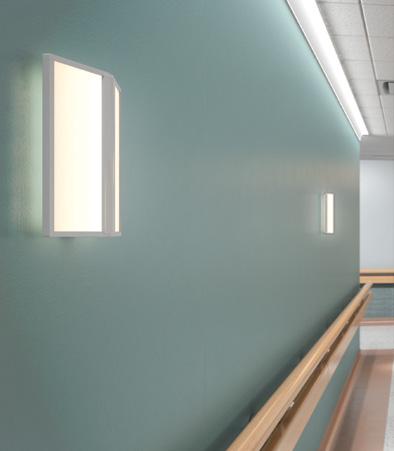
Slim, soft-glow decorative sconces provide a soothing aesthetic, project less than 3" from the wall for ADA compliance and include an integral amber nightlight. They contribute to recommended light levels, at floor, of 100 lux day, 50 lux night.
18 BalancedCare™ Corridor Lighting
Decentralized Nurses' Station
Complex lighting needs require flexible lighting systems with simple controls and glare-free optics. Nestled between two patient rooms, these nurses' stations allow nurses to give more personal attention to fewer patients at a time. They need clear visibility into the room, without veiling reflections on windows or monitors, personal control over the lighting at their station for visual tasks and circadian regulation, and overriding control in case a patient is in distress.

19 BalancedCare.AxisLighting.com Corridor Lighting

20 BalancedCare™ ELLE CEILING LINE - HORIZONTAL WALL MOUNT SHOWN BalancedCare™
Elle
The elegant Elle series is ideal for high traffic areas such as corridors, cafeterias, elevator lobbies and other common areas. With versatile mounting options, this patent-pending curved light guide can be positioned horizontally along ceiling lines, tucked vertically at the junction of two walls, or mounted as a wall or ceiling unit in a linear configuration. Elle evokes organic flow and incorporates BeWell CLS Optics to service a multitude of applications. Its curved design facilitates cleaning and is designed for durability, especially when mounted vertically in high traffic areas.
• Curved illuminated surface enabled by patent-pending BeWell CLS light guide technology
• InstaHinge™ wall-to-ceiling corner mounting mechanism for easy installation and access
• Hairline joiner for continuously illuminated runs
• Integral Axis mini constant current driver, 0-10V dimming standard
• Individual lengths up to 8'





InstaHinge™ secures




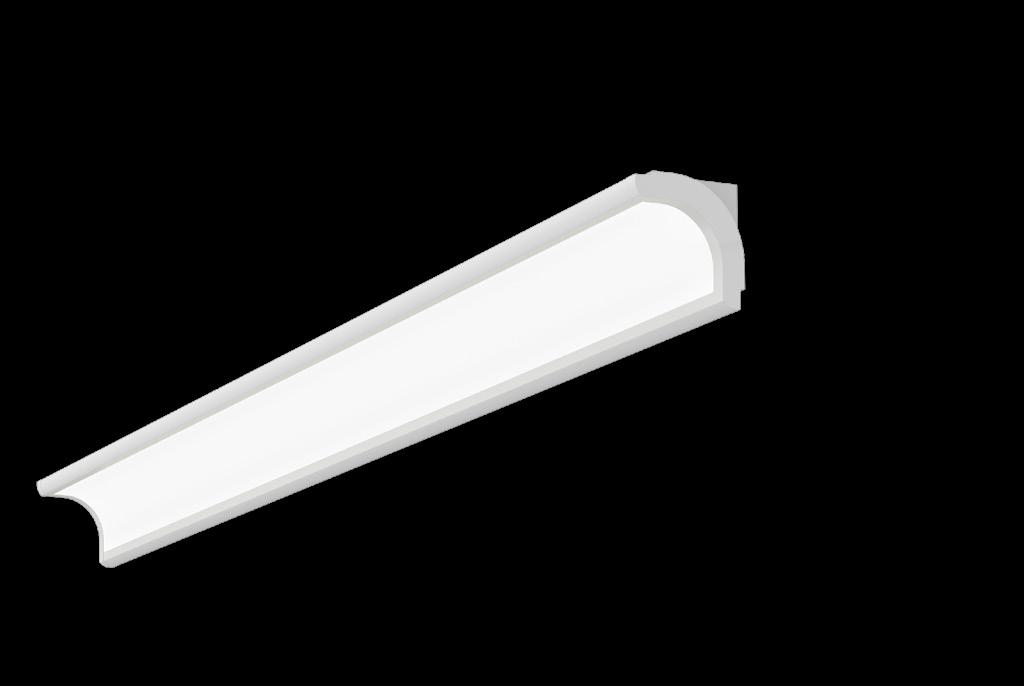
21 BalancedCare.AxisLighting.com
fixture in both ceiling line and corner
Ceiling Line (ELSC) Corner (ELSCV) 45° Ceiling (EL45) 45° Wall (EL45) Patent Pending Patent-pending concave luminaire design results in an unobtrusive clean line down the corridor ELLE CEILING LINE ELSC DAMP BeWell TM OPTICS BeWell TM CONTROLS TM CONSTRUCTION Product Families www.BalancedCare.AxisLighting.com
installations

22 BalancedCare™ CLOSED BOOK SCONCE BCSC SHOWN BalancedCare™
Sconces
Architectural sconces complement ambient lighting in the corridor, and often provide low-level lighting when daytime transitions to evening. BalancedCare Lighting offers three decorative designs in multiple sizes for scalability, with integral nightlight option to aid navigation. Additionally, each luminaire is low profile to meet ADA requirements, and features BeSealed Construction for cleanability.
• Designed with comfortable BeWell Optics providing ambient lighting and wall glow
• Amber nightlight option to aid navigation
• Detachable backplate for quick-disconnect and room-side access to driver
• Horizontal or vertical orientation, surface mounting in multiple lengths and widths
• Shallow depth (Open Book - 1 ⁷/₈", Box - 2", Closed Book -2 ⁵/₈")
• BIOS and tunable white available in select sizes


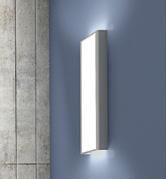




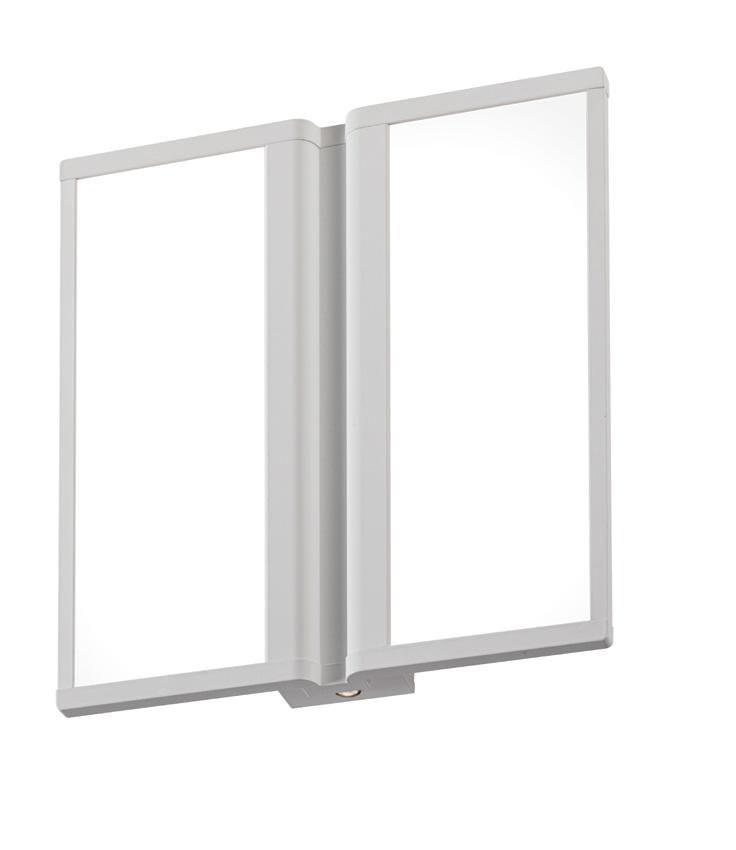
23 BalancedCare.AxisLighting.com
Low profile (less than 3") ADA compliant CLOSED BOOK BCSC OPEN BOOK BCSO BOX BCSB Product Families Patent Pending BeWe l TM OPTICS BeWell TM CONTROLS TM CONSTRUCTION IP64 www.BalancedCare.AxisLighting.com
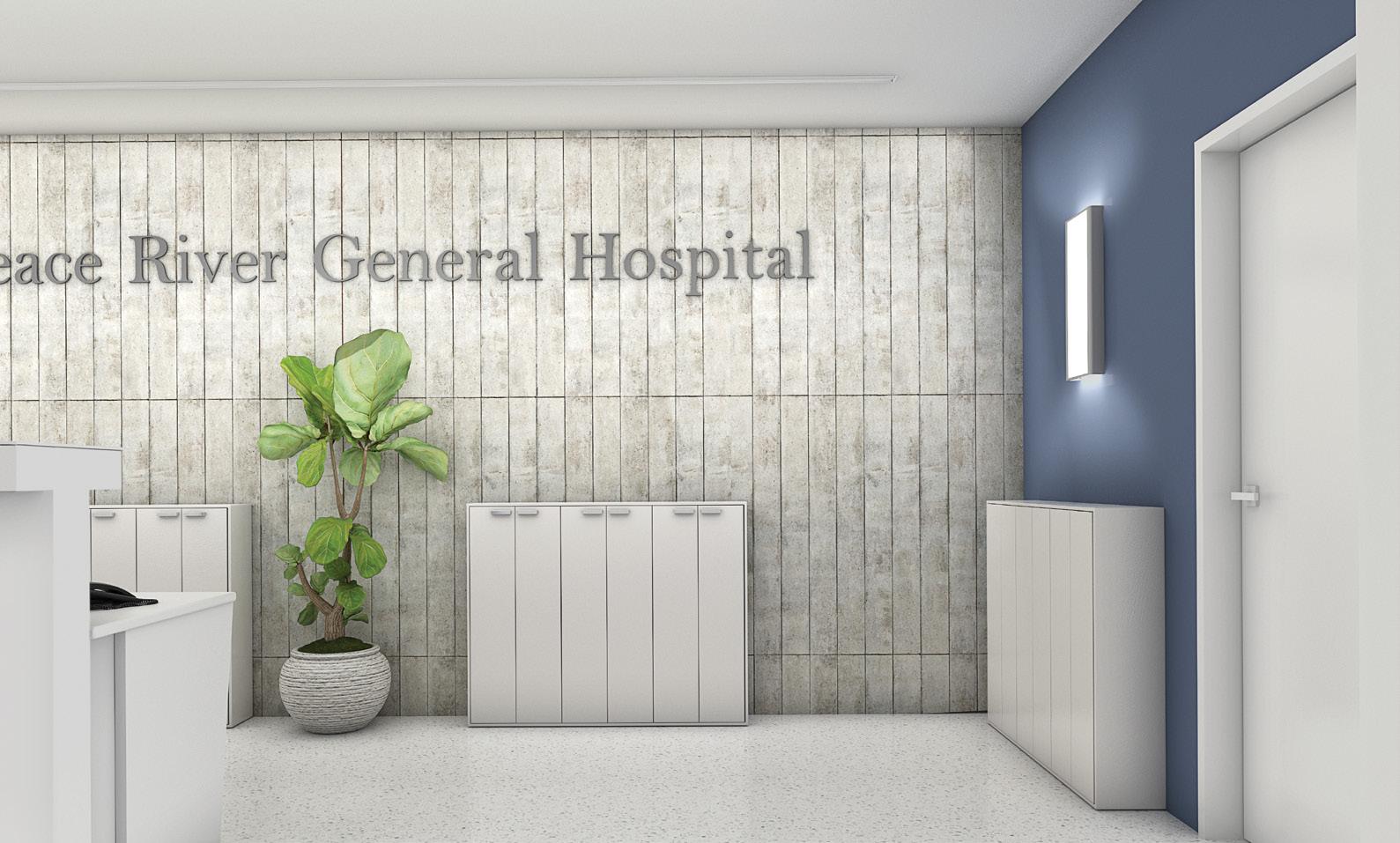
24 BalancedCare™ BOX SCONCE BCSB SHOWN BalancedCare™

All BalancedCare sconces are available in 4 lengths - 12", 18', 24" and 36" in both vertical and horizontal orientations. Nightlight available in vertical orientation only.




EXAMPLE
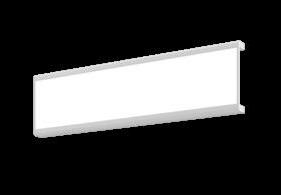



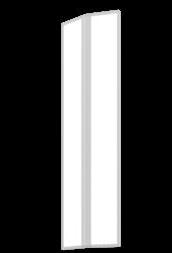
BOOK HORIZONTAL EXAMPLE






25 BalancedCare.AxisLighting.com Patent Pending Product Families
CLOSED
OPEN BOOK
OPEN BOOK HORIZONTAL
BOX
BOX HORIZONTAL
CLOSED BOOK VERTICAL
VERTICAL
EXAMPLE
VERTICAL
12" 18" 24" 36" 12" 18" 24" 36" 12" 18" 24" 36"

26 BalancedCare™ RECTANGULAR HORIZONTAL STEPLIGHTS BCSRH SHOWN BalancedCare™
Steplights
BalancedCare™ Steplights provide safe navigation through the patient room, bathroom, corridors and other common areas. Durable in design, they are available in multiple styles and optional white (2700-4000K), amber or blue LED.
• Rectangular and oval faceplates, horizontal and vertical mounting
• Steplights mount to a standard junction box
• 90° cutoff obstructs light trespass
• Multiple LED choices: White 2700 - 4000K, Amber or Blue
• Activation by photocell sensor
• Pre-set light level can be adjusted up or down during installation
• Semi-recessed; faceplates extend only ⁵/₈" off wall
• Soft contoured design prevents dust collection and is easy to clean









27 BalancedCare.AxisLighting.com
OVAL BCSOH / BCSOV RECTANGULAR BCSRH / BCSRV Product Families Patent Pending White LED: 2700-4000K Amber LED Blue LED Thru wall option ADA BeWe l TM OPTICS BeWell TM CONTROLS TM CONSTRUCTION IC IP64 www.BalancedCare.AxisLighting.com
BalancedCare™





InstaHinge™ on track 90° rotating mechanism secures fixture along ceiling line

Patent-pending concave luminaire design results in an unobtrusive clean line down the corridor




Step Flat ENDCAP OPTIONS ELLE ELSC
DAMP BeWell TM OPTICS BeWe l TM CONTROLS TM CONSTRUCTION


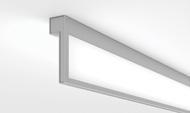


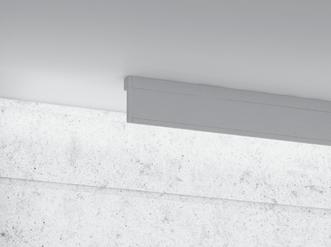
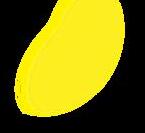





29 BalancedCare.AxisLighting.com
Luminaires
Corridor Lighting
Pose
TWO OPTICS + TWO SIDES
POSE TASK PSBC Wall - Flat Wall - Step Surface - Flat Surface - Right Angle BeWell TM OPTICS BeWel TM CONTROLS
Two illuminated sides
Beam 3 SurroundLite ™ Cove Perfekt™
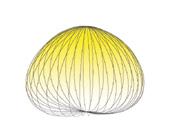

Featuring SurroundLite™ optics, Beam 3 delivers sharp cutoff and reduced contrast to improve visual comfort. Additionally, luminaires can be more widely spaced so fewer are needed to light the corridor.
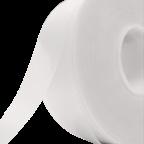
Create clean, seamless runs that are easier to install with this quality press-in acrylic lens that will not crinkle or bow. Available in lengths up to 48'

RECESSED BEAM 3
B3RLED






30 BalancedCare™ COVE CEILING CC COVE WALL CCW
BalancedCare™
60° BeWell TM OPTICS BeWell TM CONTROLS BeWell TM OPTICS BeWell TM CONTROLS CCEA APPROVED

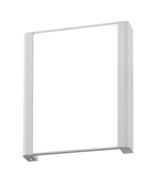

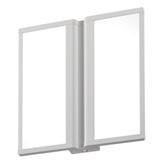
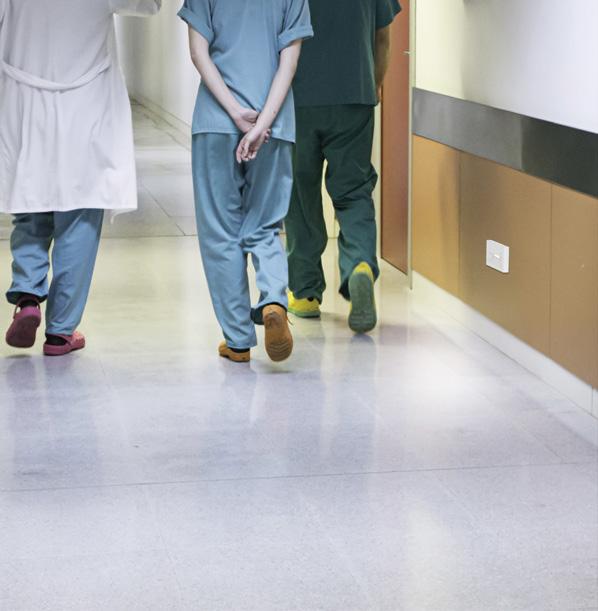






31 BalancedCare.AxisLighting.com Corridor Lighting Luminaires Sconces Steplights BOX BCSB CLOSED BOOK BCSC OPEN BOOK BCSO BeWell TM OPTICS BeWe l TM CONTROLS TM CONSTRUCTION RECTANGULAR BCSRV / BCSRH OVAL BCSOV / BCSOH ADA BeWell TM OPTICS BeWell TM CONTROLS TM CONSTRUCTION IC IP64 IP64
Listing and Technology Definitions
Listings and Technologies
ADA Compliant — objects projecting from walls (e.g., sconces) shall protrude no more than 4" into walks, halls, corridors, passageways or aisles
CCEA Approved — The City of Chicago Environmental Air (CCEA) rating ensures that the luminaire is inherently airtight. Wiring and/or branch circuit terminations are sealed off and gasketed from the plenum air space. This listing ensures that the luminaire is sealed to limit air flow from the room side to the plenum.
Damp — Denotes that the luminaire is UL Listed for Damp Locations. A damp location is normally or periodically subject to condensation of moisture in, on, or adjacent to the electrical components of a luminaire.

IK10 – an IK rating indicates the capacity of an enclosure to protect its contents from external impacts in accordance with IEC 62262:2002 and IEC 60068-2-75:1997. The IK10 rating is the maximum on the scale from IK00 (no protection) and proves protection against 20 joules of impact (the equivalent to the impact of a 5kg mass dropped from 400mm above the impacted surface)
IC — Insulated Ceiling (IC) recessed lights are rated for direct contact with insulated ceilings or, that is, they can be installed in contact with combustible material or blanketed with thermal insulation.
IP64 — UL Certified IP64 per IEC 60598 ensures that the enclosure is dust-tight and protected against splashing water without any harmful effects.

NSF2 — denotes that the luminaire has been evaluated for corrosion resistance, cleanability and the ability of exposed material to withstand normal wear. This supports the infection control standards established by healthcare.
UL/CUL Listed — All BalancedCare luminaires have been tested to be in compliance with Underwriter's Laboratory (UL) performance standards. UL is a world leader in product safety testing and certification.


BeWell™ Optics — BeWell is a patent-pending, materials-based lightguide technology that uses molecular optics to direct light. These highly efficient optics are multi-functional, available in direct, indirect, asymmetric or a combination to deliver high performance, comfortable illumination.
BeSealed™ Construction — Design attributes that enable easier maintenance, less costly construction, updated lighting technology, and engineered features that support today's stringent infection control standards.
BeWell™ Technologies — BeWell Technologies encompasses BalancedCare controls (which includes patient controls, wireless and POE), Axitune tunable white and color tuning systems, and BIOS SkyBlue.
BeWell™ Controls — BeWell Controls takes a systems approach to ensure seamless integration between the luminaires, sensors, control devices and users. It includes all elements of a facility's controls system, supporting Axis' agnostic approach to provide comprehensive systems support.
POE — Power over Ethernet (POE) delivers both lighting power and data transfer on one low-voltage wire, and enables communication with multiple building systems using Ethernet protocol, along with many types of sensors. All BalancedCare luminaires are UL Listed 2108 for POE compatibility.
Axitune Tunable White — Tunable white technology enables the user to independently control both color temperature and intensity of light within a given application. This provides the ability to change the color of light from warm to neutral to cool in appearance, over time, based on the needs of the occupant or the space. See page 16 for additional information.

BIOS® — Axis Lighting is a proud partner with BIOS Lighting. Its SkyBlue® technology creates environments that improve alertness and promote better sleep, health and well-being. BIOS is available in BalancedCare overbed luminaires.
32 BalancedCare™
ADA IC DAMP BeWell TM OPTICS BeWell TM CONTROLS TM CONSTRUCTION BeWell TM TECHNOLOGIES IP64 CCEA APPROVED
Ratings Explained
DEGREES OF PROTECTION INDICATED BY THE FIRST CHARACTERISTIC NUMERAL
Numeral Short Description
Brief details of objects which will be “excluded”from the enclosure
0 Non-protected No special protection
1 Protected against solid A large surface of the body, such as a hand (but no protection against deliberate access). objects greater than 50 mm Solid objects exceeding 50 mm in diameter.
2 Protected against solid objects Fingers or similar objects not exceeding 80 mm in diameter. Solid objects exceeding 12 mm in diameter. greater than 12 mm
3 Protected against solid objects Tools, wires, etc., of diameter or thickness greater than 2.5 mm greater than 2.5 mm Solid objects exceeding 2.5 mm in diameter.
4 Protected against solid objects Wires or strips of thickness greater than 1.0 mm. Solid objects exceeding 1.0 mm in diameter. greater than 1.0 mm
5 Dust-protected Ingress of dust is not totally prevented but dust does not enter in sufficient quantity to interfere with satisfactory operation of the equipment.
6 Dust-tight No ingress of dust
DEGREES OF PROTECTION INDICATED BY THE SECOND CHARACTERISTIC NUMERAL
Numeral Short Description
Brief details of objects which will be “excluded” from the enclosure
0 Non-protected No special protection
1 Protected against dripping water Dripping water (vertically falling drops) shall have no harmful effect.
2 Protected against dripping water Vertically dripping water shall have no harmful effect when the enclosure is tilted at any angle up to 15° from its normal position.
3 Protected against spraying water Water falling as a spray at an angle up to 60° from the vertical shall have no harmful effect.
4 Protected against splashing water Water splashed against the enclosure from any direction shall have no harmful effect.
5 Protected against water jets Water projected by a nozzle against the enclosure from any direction shall have no harmful effects.
6 Protected against heavy seas Water from heavy seas or water projected in powerful jets shall not enter the enclosure in harmful quantities.
7 Protected against the effects of Ingress of water in a harmful quantity shall not be possible when the enclosure is immersed immersion in water under defined conditions of pressure and time.
8 Protected against submersion The equipment is suitable for continuous submersion in water under conditions which shall be specified by the manufacturer.

33 BalancedCare.AxisLighting.com
EXAMPLE IP64 EXAMPLE IP64
The author thanks the International Electrotechnical Commission (IEC) for permission to reproduce Information from its International Standards. All such extracts are copyright of IEC, Geneva, Switzerland. All rights reserved. Further information on the IEC is available from www.iec.ch. IEC has no responsibility for the placement and context in which the extracts and contents are reproduced by the author, nor is IEC in any way responsible for the other content or accuracy therein. IEC 60598-1 ed.8.1 “Copyright © 2017 IEC Geneva, Switzerland. www.iec.ch” Listing and Technology Definitions
SOLUTIONS DESIGNED TO SIMPLIFY CIRCADIAN LIGHTING IN EVERYDAY APPLICATIONS
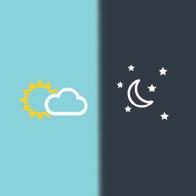
BIOS SkyBlue® for Healthcare
Life is all about contrast, perhaps none as important as light and dark, day and night.
As humans, we have evolved with blue sky and daylight as natural cues to keep our body clocks aligned with the 24-hour day. This healthy contrast between daylight and darkness allows our circadian rhythms to function as designed.
Even though this natural lighting cycle is healthy, hospital lighting typically feels anything but natural. BIOS SkyBlue® technology to bridge the gap, stimulating circadian response while maintaining the appearance of white light in familiar correlated color temperatures (CCTs).

A broad range of Axis luminaires seamlessly integrate SkyBlue technology to enable creation of environments that improve alertness and promote better sleep, health and well-being. For additional Axis lighting featuring BIOS SkyBlue technology, please visit www.axislighting.com







luminaire with SkyBlue option may appear identical to the white light from traditional LEDs, but the actual spectrum is different – it delivers greater melanopic content, which contributes to higher melanopic to photopic (m/p) ratios, higher equivalent melanopic lux (EML) and circadian stimulus (CS) – current circadian lighting metrics. *Ambient Mode Only


34 BalancedCare™
BIOS SkyBlue®
BCFA BalancedCare Flexible Ambient BCSB/BCSC/BCSO Sconces BCMF* BalancedCare Multi-Function Overbed
BIOS DYNAMIC SOLUTION FOR 24-HOUR FACILITIES
Better sleep by night, improved alertness by day
BIOS 3500K Dynamic Engine Spectral Power Distribution

Melanopsin Sensitivity
3500K with
3500K with
Dimmer Settings With Bio-Dimming™ *

SkyBlue maintained for maximum circadian Impact. Light output remains relatively constant.
SkyBlue removed to provide minimal circadian impact. Light output dims down linearly.
* Also compatable with push button dimmers
BIOS dynamic light engines use easy-to-program Bio-Dimming™ to provide full SkyBlue® content during the day and allow SkyBlue® to be removed in the evening while light levels remain constant. Once SkyBlue is reduced then light levels can be changed.
Functional white light with healthy impact
• Maintains appearance of white light while invisibly delivering a spectrum with greater melanopic content
• Peaks at 490 nanometers (nm) to target melanopsin, the light-sensitive protein contained in our non-visual photoreceptors
Static solution supports proper daytime circadian stimulus
• The static spectrum delivers a steady but invisible blue-light boost to white light throughout the day, in choice of 3000K, 3500K or 4000K
Dynamic solution for 24-hour facilities
• Supports daytime circadian stimulus, reduces nighttime stimulus
• Skin color in its true light
• CRI > 80; R9 > 75 at each correlated color temperature, because color rendering is so important in healthcare
The controls you know
• Uses any single channel LED driver with 0-10V dimming interface
35 BalancedCare.AxisLighting.com BIOS SkyBlue® DIMMER SETTINGS* BIOS SKYBLUE* LIGHT OUTPUT 100% (FULL ON) 100% 100% BIODIMMING BIOS
99%-51% 100%-0% 100%-90% 50% NO BIOS 90% INTENSITY DIMMING BIOS
49%-0% NO BIOS LINEAR DIMMING
380 405 430 455 480 505 530 555 580 605 630 655 680 705 730 755 780 1 0.5 0 Relative Power (Au) Wavelength (nm) BIOS
® BIOS
™
SkyBlue
Bio-Dimming
Peak
BeWell TM TECHNOLOGIES
Circadian Lighting Metrics
CIRCADIAN LIGHTING METRICS
Circadian Stimulus (CS), Equivalent Melanopic Lux (EML), and Melanopic Equivalent Daylight Illuminance (MEDI)

Metrics have been developed as tools to enable lighting professionals to create environments that promote alertness by day and good sleep at night – prime examples of circadian rhythms, or biological processes that repeat every 24 hours.
This becomes especially important in hospitals where schedules are erratic, where support of circadian health can also improve overall health and wellbeing.
Key elements to entrain – or synchronize – humans’ biological clocks to the light/dark cycles of the 24-hour day are amount, spectrum, length of exposure, time of day, distribution, and personal light history – one's sensitivity to light.
Research has shown that these elements, when delivered in the right combination, can improve sleep quality, reduce agitation, depression, and fatigue for patients, caregiving staff, and families in hospital environments. These positive effects can last beyond a patient's discharge or after a night shift nurse leaves to go home.
Delivering the right light at the right time of day helps avoid circadian disruption, which can cause poor sleep but also increase risk of serious illnesses such as cancer, heart disease and delirium.
Recently discovered photoreceptors in the human eye –photosensitive retinal ganglion cells or ipRGCs– contain the protein melanopsin, which is highly sensitive to 460-480 nm blue wavelengths. When stimulated by light, ipRGCs send a signal to the body’s master clock, telling it to reset its cycle for the next 24 hours. That signal triggers a variety of biological processes, including essential production of hormones such as melatonin and cortisol.
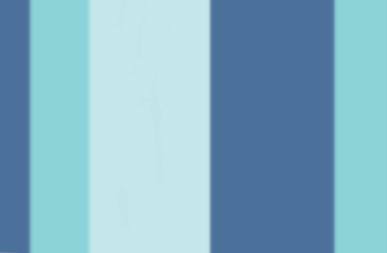
Importance of light/dark signal:
Cortisol rises with the early light of day, keeping us awake and alert. Melatonin is suppressed by light during the day, but rises as darkness sets in to promote sleep.
ALL CIRCADIAN METRIC CALCULATIONS REQUIRE
Spectral power distribution (SPD) of light sources; correlated color temperature (CCT) is not an accurate measure
Light measured on the vertical plane at eye level, either 4'-0" Above Finished Floor (AFF) or 18" above the workplane, for adjustable height desks
36 BalancedCare™ T I M E FO D OMA TNU RTCEP U M DIS
E
BUTION EXPO
6am 9am 12pm 3pm 6pm 9pm 12am 3am 6am 9am Cortisol Melatonin
18" 4’
E
Circadian Lighting Metrics
CS characterizes the human response to light in terms of melatonin. EML and MEDI characterize a light source’s effectiveness at stimulating melanopsin.
The three are not interchangeable, and each tells a different story – but any of them will indicate if one is on the right path to effective circadian lighting design, depending on the application.
Each metric provides its own calculation tool and counts toward achieving points in the WELL Building Standard, v1 or v2, in the Circadian Lighting Design category.
• Factors in contribution of all five photoreceptors, along with amount and spectrum to assess circadian stimulation
• It estimates the percentage of melatonin a person will suppress after one-hour exposure to a light source during the day, which in turn affects that person’s melatonin levels at night
• Robust melatonin levels may result in better sleep, improved mood, performance, and feelings of alertness
• High CS of >0.3 recommended for early morning, reducing to <0.1 in the evening
• https://www.lrc.rpi.edu/cscalculator/

• Introduces the unit ‘melanopic lux’ as a measure of light’s effect on stimulating the circadian system compared to the visual system
• It is a two-part calculation involving the melanopic to photopic (M/P) ratio and lilluminance at the eye (Ev)
• The M/P ratio formula converts visual response to circadian response based on the SPD of one (or more) light sources
• It will indicate whether light source A is better or worse than light source B, of equal energy, at stimulating melanopsin
• EML = M/P ratio x Ev (vertical illuminance)
• https://standard.wellcertified.com/tables > Table L1: Melanopic Ratio > IWBI link to spreadsheet
• Factors in contribution of all five photoreceptors to determine how the ipRGCs respond to light compared to rods and cones
• Like EML, it is a two-part calculation requiring the melanopic daylight efficacy ratio (m-DER) and illuminance at the eye (Ev)
• M-DER compares a light source’s ability to stimulate melanopsin to that of standard daylight
• MEDI = m-DER x Ev (vertical illuminance)
• https://balancedcare.axislighting.com/wp-content/uploads/2020/11/CIE-S-026-alpha-opicToolbox_Nov2020.xlsx


37 BalancedCare.AxisLighting.com
380 480 580 680 780 Circadian System Melanopic Peak 460-490 nm Lamp Data Circadian Visual Visual System Photopic Peak 555 nm 380 420 440 460 480 500 520 400 540 580 620 660 700 560 600 640 680 720
CS = 0.3 CS= 0.2 CS = 0.1 Image by Lighting Research Center
EML CS MEDI
WHAT IS UGR?
Glare is in the eye of the beholder! UGR measures its impact on visual comfort while helping to achieve WELL points.

The Unified Glare Rating (UGR) is a metric used to predict discomfort glare in interior applications and considers the direct light component. It has gained renewed interest of late to achieve points toward WELL certification. Well v2 of the WELL Building Standard, under the L04 Electric Light Glare Control category, allots points for achieving a UGR of 16 or lower as a luminaire consideration, or as a space consideration, for regularly occupied spaces. As a glare evaluation method, UGR has been defined in CIE documents: CIE 117-1995, CIE 190-2010, CIE 232-2019.
UGR is not meant to be an attribute of the luminaire alone –but should be based on an application.

It indicates the contrast, or ratio, between luminaire luminance (perceived as brightness) to background luminance from a reference vantage point, i.e., a patient sitting up in bed, looking straight ahead, with a multi-function luminaire above their head and recessed general ambient luminaires in the adjacent guest area.
Line of sight is important – the relationship of viewers to luminaires will result in multiple UGR values, as shown in the application example below, where:
lm+C-Ambient-7000 lm (shown below)
Type A-1 is the BalancedCare Flexible Ambient 1×1 (BCFA) and Type C is the BalancedCare Multi-Function 2×4 (BCMF24).
Figure 1: calculation results in UGR of 11.95 from patient viewpoint (Ambient mode shown).
Figure 2: calculation results in UGR of 11. 77 from guest viewpoint (Ambient mode shown).
38 BalancedCare™
UGR
at
Observer Position
11.95 Patient Viewpoint from right to left across room, in example below 11.77 Guest Viewpoint from top to bottom towards bed, in example below A-1-1000 lm+C-Exam-14,280 lm 11.02 Patient Viewpoint 13.39 Guest Viewpoint 10 10 10 16 17 17 16 10 10 10 16 17 17 16 10 10 10 16 17 17 16 10 10 10 14 16 16 15 10 10 10 12 12 12 14 10 10 10 10 11 12 12 10 10 10 10 10 10 16 10 10 10 10 10 10 10 C-Ambient A-1 A-1 13 16 18 20 21 20 19 11 13 18 20 20 20 18 10 12 15 16 10 10 10 10 10 10 14 10 10 10 10 10 10 12 10 10 10 10 10 10 10 10 10 10 10 10 10 10 10 10 10 10 10 10 10 10 10 10 C-Ambient A-1 A-1 10 10 10 16 17 17 16 10 10 10 16 17 17 16 10 10 10 16 17 17 16 10 10 10 14 16 16 15 10 10 10 12 12 12 14 10 10 10 10 11 12 12 10 10 10 10 10 10 16 10 10 10 10 10 10 10 C-Ambient A-1 A-1 13 16 18 20 21 20 19 11 13 18 20 20 20 18 10 12 15 16 10 10 10 10 10 10 14 10 10 10 10 10 10 12 10 10 10 10 10 10 10 10 10 10 10 10 10 10 10 10 10 10 10 10 10 10 10 10 C-Ambient A-1 A-1 Unified Glare Rating (UGR)
Luminaires
(Average)
3.5’ AFF
A-1-1000
HOW IS IT CALCULATED?
Software programs such as AGi32 and Dialux can calculate UGR values – average, max and min – based on this formula
UGR = 8 log [0.25/Lb * ∑ Ls2*ω/ρ2] that factors in:
• background luminance (cd/m2)
• luminance of the apertures of each luminaire in the direction of the observer’s eye (cd/m2)
• solid angle of the luminous parts of each luminaire at the observer’s eye (sr)
• displacement of luminaire from line of sight
WHAT DO THE NUMBERS MEAN?
Values are given in the range of 10-30, lower is better; 16 is considered perceptible, 19 just acceptable; above 19 it becomes more uncomfortable. The table below compares UGR values with corresponding 7-step discomfort glare criteria (developed by R.G. Hopkinson).
While these numbers are an indication, it is important to remember that interpretations of glare are subjective, as each person’s perception differs.
Factors Contributing To High UGR, In General:
• Lumen package – increased lumens could mean higher UGR
• Larger room sizes – more sources in field of view
• Lower ceiling heights, which indicate lower mounting heights
• Luminaire distributions with high angle brightness
• Lower surface reflectances
• Luminaire aperture size
• Spacing – farther apart could mean higher UGR
• Relationship of luminaire (max candela angle) to observer’s line of sight

UGR considers reflectances of surrounding room surfaces, and luminaires within a person’s line of sight that may cause them to sense glare
Single luminaire values are possible, but they do not tell the whole story
Although it is misleading to assign a UGR value to a single luminaire, for those seeking that number Photometric Toolbox calculates for uniform arrays of luminaires, based on a single IES file It sorts results into a table of 190 individual calculations based on an assortment of 19 common room shapes and five combinations of surface reflectances for two observer positions.
39 BalancedCare.AxisLighting.com
UGR Discomfort Glare Criterion 10 Imperceptible 13 Just perceptible 16 Perceptible 19 Just acceptable 22 Unacceptable 25 Just uncomfortable 28 Uncomfortable Unified Glare Rating (UGR)
2505 Senkus St. Lasalle, QC H8N 2X8 Canada Toll Free: 1 800 263-AXIS (2947) Tel.: 514 948-6272 Fax: 514 948-6271 BalancedCare.AxisLighting.com





































































































































